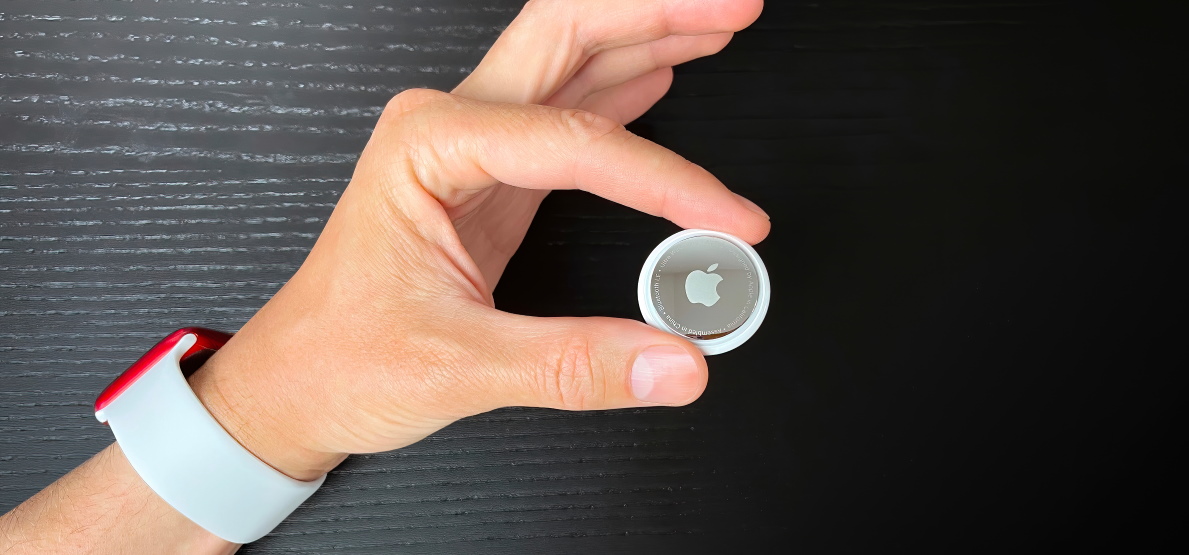
How do you know whether a stalker has slipped an AirTag into your possessions? If you have an iPhone, you’ll quickly get an alert that an AirTag is following you. If you’re an Android user, the AirTag will just start beeping three days after it begins tracking you. Here’s how to scan for AirTags.
How It Works: AirTags Use Bluetooth
Here’s how this works: AirTags use Bluetooth so nearby devices on Apple’s Find My network can spot them. If you use a Bluetooth scanner app—the kind of app that shows nearby Bluetooth devices—you will see any nearby AirTags appear in the list of nearby Bluetooth devices.
It’s a little more complicated than it sounds. The Apple AirTag won’t show up as an “AirTag” in the list, but it will appear as an unnamed Bluetooth device—and it does say it’s an Apple device, so it may be easy to spot the AirTag if you don’t own any Apple-made Bluetooth gadgets.
Also, once you’ve spotted the device that appears to be an AirTag, you can move your Android phone around and pay attention to signal strength to pin down its location.
How to Scan For AirTags on Android
To scan or nearby AirTags, you’ll need a Bluetooth scanner app. We used LightBlue, a free Bluetooth scanner app available on the Google Play Store. Install the app on your Android phone, launch it, and perform a scan.
You’ll see all nearby Bluetooth devices here—everything from Bluetooth mice and keyboards to headphones to AirTags. If you live in an apartment building or you’re currently in a public location, bear in mind that you may see other people’s nearby devices in this list.
So, if you want an easier time spotting AirTags in the list, it may be helpful to get away from other people’s devices. You’ll have an easier time spotting an AirTag in your bag if you’re in the middle of an empty field than if you’re sitting in the middle of an airport.
The AirTag will appear as an “Unnamed” device. If you tap it, you’ll see that the “Manufacturer specific data” field says this particular entry is an Apple device, which is a hint that this particular device might be an AirTag. It could also be another piece of hardware made by Apple, of course.
Note: Note that the AirTag’s device ID—that’s the string of values that appears as “42:9A:35:A7:99:51” in the below screenshot—will automatically change to new random values over time. You can’t rely on the ID alone to spot an AirTag over time.
How to Find a Nearby AirTag
If you’re pretty sure there’s an AirTag near you, you can use the device’s signal strength displayed in the app to help find it. The closer your phone gets to the AirTag, the more the signal strength meter will fill up.
By moving your phone around, you may be able to get a better idea of where the nearby AirTag is located.
Scan the AirTag With NFC
Once you find the AirTag, if it’s in Lost Mode and is tracking you, you can scan the white side of the AirTag with NFC to view contact information and a message the AirTag’s owner might have set. Just tap the back of your Android phone (or an iPhone) against the white side of the AirTag.
Obviously, This Isn’t Ideal
Clearly, this isn’t an ideal solution. With the launch of AirTags in early 2021, iPhone users will get a quick notification that an AirTag is following them—but Android users have to wait three days to hear a beep or scan for AirTags manually. That’s far from ideal.
What happens if Google releases a similar Bluetooth tracker in the future? Do Android users get a quick notification a Google Tag is following them, but iPhone users have to wait three days to hear a beep?
Clearly, more interoperability would be ideal—if Apple and Google created a cross-platform standard that would let Android quickly detect nearby AirTags in the same way, that’d be great. Unfortunately, we’re not holding our breaths for that kind of cooperation.






